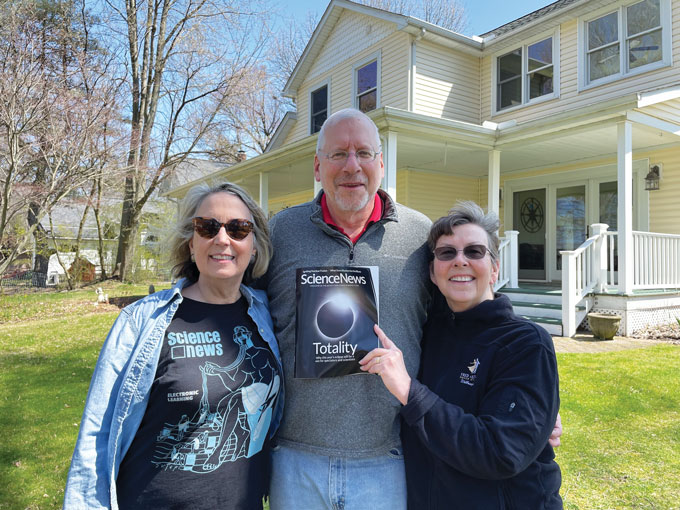On April 8, millions of people in the United States experienced a thrill of a lifetime — seeing a total solar eclipse.
I was among those lucky people. After failing to get organized early enough to book lodging in the path of totality, I noted my failure in an editor’s note. Science News readers Kathy and Paul Mathews then emailed me to offer their guest room in Ohio. I didn’t want to impose, but Kathy and Paul assured me that it would be no problem. You’d think they welcome itinerant eclipse chasers every day.
Not surprisingly, Kathy and Paul turned out to be kind, funny, smart and curious about the world — typical Science News readers. We watched the eclipse on the shore of Lake Erie with their friends, including Dan Pfeiffer, who had stayed up until 1 a.m. the night before prepping telescopes and building a projector to assure the best possible viewing experience. It was sublime.

Kathy and Paul also are typical of many longtime print readers; they worked in STEM, and Paul teaches statistics. But that definition of “typical” reader is evolving. Last year, more than 17 million people read Science News articles on our website. Online readers are less likely to work in STEM or education, often encountering us when they see one of our articles pop up in search engine results or on social media. And 8 million or so people follow us on Facebook, Instagram, TikTok and other social platforms.
Adding even more variety, students at almost 6,000 high schools get free copies of the magazine through our Science News Learning program. Most of the schools serve low-income communities that often lack up-to-date textbooks. The magazine and accompanying educator resources help teachers and young people connect with the latest science. The program is made possible by contributions from individuals and institutions; you can learn more about the program at the Science News Learning educator portal.
And we’re increasingly reaching out to students and teachers in middle schools. Last fall, we tested sending Science News Explores, our magazine for young people ages 9 and up, to schools along with “big” Science News. Students and teachers were enthusiastic, and we’re hoping to be able to make both magazines available to more schools starting this fall.
One more thing: This issue is being distributed at the Regeneron International Science and Engineering Fair, a program of our parent nonprofit Society for Science. About 1,700 high school students from around the world will convene in Los Angeles this month to present their original research and compete for awards and scholarships. It’s thrilling to see young people already putting science to work to make the world a better place. Welcome to the next generation of Science News readers.
